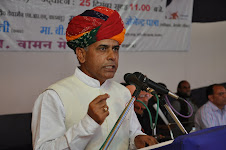From: Grannie <granniefox@gmail.com>
Date: Tue, Jul 6, 2010 at 12:33 PM
Subject: [MedicalConspiracies] How Safe is Soy Infant Formula?
To:
Posted By Dr. Mercola | June 13 2001 | 21,745 views
http://articles.mercola.com/sites/articles/archive/2001/06/13/soy-formula-part-one.aspxBy David Goodman
New research suggests high concentrations of manganese found in soybean-based baby formula can lead to brain damage in infants and altered behaviors in adolescents.
Dr. Francis Crinella, clinical professor of pediatrics at UC-Irvine, and Trinh Tran, a graduate researcher at the UC-Davis Department of Animal Studies, have described how the soybean plant lifts up manganese in the soil and concentrates it so that its use in soy-based infant formula can result in as many as 200 times the level found in natural breast milk.
These and other experts believe that such high concentrations could pose a threat to the immature metabolic systems of babies up to 6 months of age.
The size of the market for soy-based infant formula is held closely, and none of the producers contacted by Insight would reveal sales figures. An independent expert estimates the market for all infant formula to be about $3 billion, with soy-based formula accounting for about $750 million of that, having doubled in the last 10 years.
The best-selling brand is Isomil (Ross Products Division of Abbott Laboratories), followed by Enfamil ProSobee (Mead Johnson), Nursoy (Wyeth-Ayerst) and Alsoy (Carnation).
According to Crinella and Tran, the discovery of potential harm from such products began in 1980 when a federal agency then called the Food and Nutrition Board established safe and acceptable values for manganese in adults, toddlers and infants.
Permissible levels for the three age groups ranged from 2.5 to 3 mg per day for adults, 1 to 1.5 mg per day for toddlers and 0.5 to 1 mg per day for infants under 6 months. This job now is handled by the Food and Drug Administration (FDA), which today permits 0.6 mg per day for infants, 120 times the amount found in mother's milk.
The FDA says that in the next few months it will lower the guidelines.
Ruth Welch, an FDA spokeswoman, confirms that a report will recommend a minimum of only 0.005 mg of manganese a day and no maximum for infants up to age 6 months.
Despite government assurances of safety at the recommended levels, the professional literature shows that in 1983 Phillip Collipp, a pediatric physician at Nassau County [N.Y.] Medical Center, tested infant formula for manganese in popular soy brands, including Isomil, ProSobee and Nursoy, purchased locally. He published data showing that they contained from 0.2 mg to 1 mg per quart. Later that year, Drs. Bo Lönnerdal and Carl Keen of the UC-Davis Department of Nutrition tested formula taken from pharmacy shelves worldwide.
They found higher manganese concentrations in soy formulas, ranging from 0.4 mg to 2.2 mg; the mean value of 1.2 mg vastly exceeded the infinitesimal 0.005 mg found in mother's breast milk.
After the research by Collipp, Lönnerdal and Keen, nutritional scientists worldwide reported that newborn babies, in symbiosis with their mothers during the first weeks, absorbed most of the manganese in breast milk. The tiny amounts the baby suckles a dozen times a day appear to function as a catalyst for more than 50 biochemical reactions. This suggests a newborn's digestive system is superbly attuned to absorb the infinitesimal levels of manganese in mother's milk, and that, in fact, it is essential to the development process.
At least some of this soy formula, which tested at up to 200 times the manganese of breast milk clearly has the potential to overload the infant's little body.
Lönnerdal says the baby's immature liver cannot handle the manganese load by excreting the excess. In newborns, ingested manganese rises to high levels in the blood plasma and red blood cells, then permeates the liver, kidneys and other soft tissues of the body, including the brain. He believes, however, that by the time of weaning, when the infant normally consumes solid food, it can metabolize manganese.
Crinella calculated that by the age of 8 months an infant fed soy formula daily absorbs approximately 1.1 mg of manganese above metabolic need. "A significant amount, about 8 percent, is deposited in a brain region vulnerable to threat of manganese attack," he says.
Six years ago, tragic incidents in two London hospitals, the Hospital for Sick Children and Queen Elizabeth's Hospital for Children, alerted the medical community to the vulnerability of sick babies to manganese attacks on the brain. Suffering from liver disease, the babies had received nutrient solutions containing recommended amounts of manganese through an intravenous tube. The manganese had no greater concentration than in soy formula and was considered safe by government standards, but after a few months the infant brains showed damage.
Of 57 babies receiving "safe" amounts of manganese, two fell ill with movement disorders and six suffered damage to their basal ganglia when examined by magnetic resonance imaging (MRI).
Also, Crinella has done extensive studies on the effect of manganese in adolescents. His research detected relatively high levels of manganese in the scalp hair of hyperactive children when compared with matched control subjects.
Crinella at first was puzzled by the high manganese levels in hyperactive children. The only exposure of his subjects had to be through diet, yet California has historic low levels of manganese in its soil, air and water. Because adolescents metabolize at least 97 percent of manganese ingested, the exposure had to have occurred earlier in life, possibly from manganese in baby food, or (as his research proceeded further) soy-based infant formula. Could elevated manganese be a clue to the current epidemic of adolescent violence sweeping the nation?
Crinella did a study with rats and manganese supplementation and the results were clear-cut: Rats given 0.05 mg. of manganese daily for 18 days in the amount comparable with the manganese in breast milk did as well as the control group given no manganese. Rats given supplemental manganese five times higher at 0.25 mg daily suffered a precipitous decline in basal-ganglia dopamine of 48 percent. The rats dosed daily with the highest amount, 0.50 mg, had a plunge in dopamine by a staggering 63 percent.
"The brain undergoes a tremendous proliferation of neutrons, dentrites and synapses during the first months of life," Crinella says. "The brain especially is vulnerable in early life precisely because such rampant growth is taking place, and at that time intrusions by potentially toxic substances like manganese perturbing the emerging neural organization can exert long-term effects. Manganese ingested during a period of rapid brain growth and deposited in the critical basal ganglia region may affect behavior during puberty when powerful stresses are un- leashed on the dopamine neurons, and altered behavioral patterns appear."
These altered behavioral patterns during late childhood and early adolescence, according to Crinella, may be diagnosed as hyperactivity with attentional deficit - or perhaps as "manganese-toxicity syndrome."
Everett Hodges, founder of the Violence Research Foundation, thinks Crinella's case is overwhelming. "Criminals ages 16 and 17 years old today, some of them born to poor mothers between 1983 and 1984, could have received from the government soy formula with enough manganese to disrupt growing brains, and this may be why adolescents have difficulty restraining aggressive impulses now."
Dr. Stanley van den Noort, a member of the foundation's board, is former dean of the UC-Irvine College of Medicine. He says, "I think the data presented at the conference are convincing that manganese is a neurotoxin. Newborn infants exposed to high levels of manganese may be predisposed to neurological problems. We should exercise strong caution in the use of soy-based formula around the world."
Naomi Baumslag, clinical professor of pediatrics at Georgetown University Medical College and president of the Woman's Public Health Network, tells Insight, "Only 50 percent of newborns today suckle at the mother's breast even once. After six months, the number has fallen to only one mother in five. Often mothers for the sake of convenience plunk soy bottles into the infant's mouth. Why do so many mothers in the United States imagine they have given birth to a baby soybean instead of a human child?"
Baumslag goes further: "There is a great deal of scientific evidence that soy formula can be damaging to newborns,quite aside from the manganese." She says a tablespoon of soy formula can be dangerous both for what it does not have and for what it has.
That spoonful may be deficient in linoleic and oleic essential fatty acids, DHA-brain-growth factor, epidermal growth factor, lactoferrin, casomorphin and immune factors such as IgA, neutrophils, macrophages, T-cells, B-cells and interferon - all provided by the mother in breast milk to defend her baby.
On the other hand, Baumslag says, that spoonful does contain phytates, protease factors, soy lectins, enormous amounts of phytoproteins, and genistein and daidzen, both moderate estrogen mimics in humans.
"Why deprive the newborn infants of perfectly good breast milk - a nutritionally superior food in every way for the baby - and feed them soy beans?" Baumslag asks.
Insight Magazine
Dr. Mercola's Comments: |
This is a new one for me with soy formula. I was not aware of its elevated manganese levels. I have known of the increased aluminum levels in soy.
The other significant issue are the estrogens in soy. A soy-fed baby receives the equivalent of five birth control pills' worth of estrogen every day. These babies' isoflavone levels were found to be from 13,000 to 22,000 times higher than in non-soy fed infants.
Related Articles:
To subscribe: MedicalConspiracies-subscribe@googlegroups.com
DETOX WITH All NATURAL PURE GREEN CALCIUM BENTONITE CLAY USED INTERNAL/EXTERNAL http://clayadvantage.com/
Information here in is for educational purpose only; it may be news related, purely
speculation or SOMEONE'S OPINION. Consult with a qualified MD before deciding on any course of treatment, especially for serious or life-threatening illnesses.
By becoming a member of this group you AGREE to hold this group its members, list owners, moderators and affiliates harmless of any liability for any direct, or indirect consequential, incidental, damage incurred.
http://www.law.cornell.edu/uscode/17/107.shtml
In accordance with Title 17 U.S.C. Section 107,
**COPYRIGHT NOTICE
--
Palash Biswas
Pl Read:
http://nandigramunited-banga.blogspot.com/





































No comments:
Post a Comment